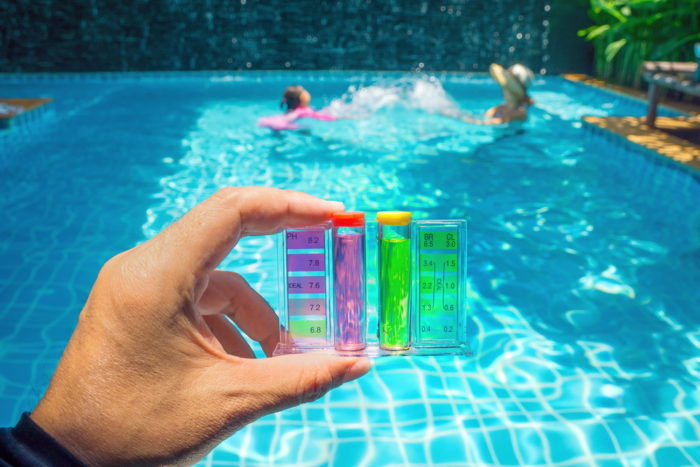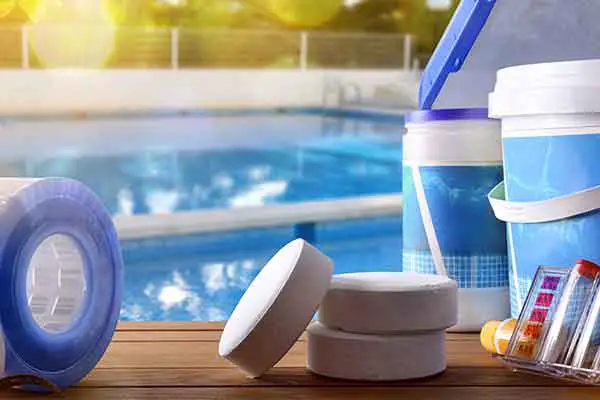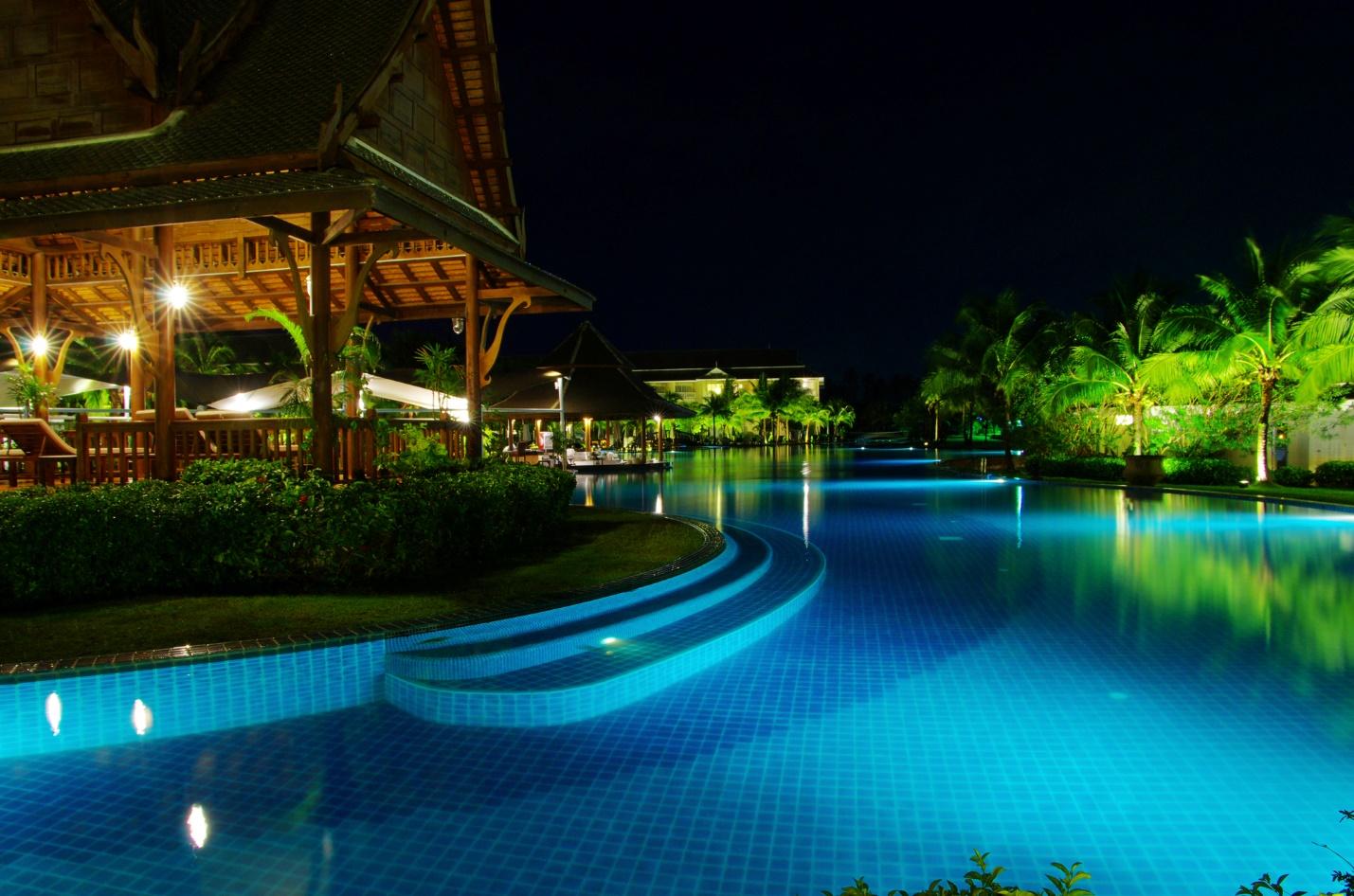The chemistry of balancing swimming pool chemicals sounds like technical stuff for an ordinary homeowner– but yes, you can do it yourself! Though easier said than done, thousands of people now add chemicals to their pools all alone.
But merely chlorinating your water won’t cut it. You must mix up all the essential chemicals to achieve a healthy dipping environment. Failure to include all the vital ingredients can encourage bacterial growth and cause unsafe conditions in your swimming pool.
As a consequence, the water:
- becomes unsafe for chilling,
- turns cloudy,
- damages the skin, and
- ruins your swimming pool’s walls & infrastructure.
To avoid these devastating pitfalls, practice and master the art of balancing pool chemicals. Learn everything you need to know below.
Swimming Pool Balancing Chemicals: What are They?
They are chemicals used to increase/reduce the pH, alkalinity, and calcium hardness of pool water to optimize it for safe swimming. Chemicals also sanitize pool water, making it healthy and contaminant-free.
Furthermore, they help stabilize pool waters reducing the corrosive and sedimentation effects caused by unstable conditions.
Some common swimming pool chemicals meant for balancing purposes include:
1 Alkalinity increasers/decreasers,
2 pH increasers/reducers,
3 Calcium hardness enhancers, and
4 Cyanuric acid.
Before adding any chemicals meant for balancing purposes, it’s essential to test the water’s acidity and alkalinity. To do this, you need indicators known as test strips. These are unique paper strips that you can immerse in water and read conditions by observing color changes.
1. pH increasers/reducers
These chemicals help you reduce/increase your swimming pool’s pH. Maintaining an appropriate pH enhances the performance of chlorine and bromine.
Furthermore, balancing water to optimal pH reduces the corrosive effects it may have on swimming pool materials.

2. Alkalinity increasers/decreasers
Apart from balancing the pH, alkalinity controls the corrosive effects of an acidic environment, thus protecting your swimming pool’s equipment.
The appropriate alkalinity for a swimming pool begins from 80 to around 120 parts per million (ppm).
3. Calcium hardness enhancers
These enhancers improve the softness of swimming pool water. If your test finds low calcium levels, pour calcium hardness enhancers to achieve optimal hardness.
Well-balanced pools keep their calcium levels between 220 and 420 parts per million (ppm).
4. Cyanuric Acid/Swimming Pool Stabilizer
This should be the final chemical in the balancing process. Also known as the pool stabilizer, cyanuric acid should be added before pouring chlorine and bromine.
This acid plays a vital role in preventing sun rays from evaporating away the chlorine in your baths. While you may find quantities of cyanuric acid in pool shock, adding more guarantees that your chlorine won’t evaporate away.
Mixing it to around 30 to 50 parts per million balances the amount (of the above chemicals) you’ll need to chlorinate your water.
Swimming Pool Chemicals: What are Sanitizers?
But water balancing solutions are not the only chemicals your pool needs. A separate group known as sanitizers focuses on making water clean and healthy for swimming.
Some common sanitizers include:
- Biguanide
- Chlorine tablets
- Bromine
- Minerals
Though sanitizers play a central role in cleaning pool waters, always add them after you have balanced the pool’s alkalinity, acidity, and calcium hardness, as discussed above.
The Perks of Balancing Swimming Pool Chemicals
You might be asking, “What happens if I don’t balance the chemicals in my swimming pool?” And the answer is straightforward; prepare for the worst.
Besides putting up with cloudy waters, you risk damaging your swimming pool by subjecting it to corrosion. Next, you subject your skin to harsh conditions and may develop illnesses.
That being said, discover the primary advantages of balancing swimming pool chemicals:
- Mixing chemicals in the right proportions ensure all waters are clean, safe, and fun to swim in.
- It also balances the water conditions preventing damage to a pool’s wall and infrastructure.
- It reduces excess chlorine known to irritate the skin, eye and cause other possible conditions.
- It ensures there’s sufficient chlorine to kill all sorts of contaminants.
- An extremely high pH level can cause cloudiness and deposit formation on pool walls and infrastructure. Similarly, extremely low pHs can cause etching and corrosion.
In a nutshell, failure to optimize your pool water’s conditions can cause lots of hiccups in your swimming hole.
To avoid such trouble, focus on mastering the art of mixing chemicals to optimum conditions.
Last Words on Balancing Swimming Pool Chemicals
Before pouring any balancing chemicals into your pool, test the water using a strip to determine its condition.
Testing allows you to balance the chemicals correctly while reducing the average time you take to figure out what you should increase/reduce.
Lastly, remember to go through the chemical balancing steps and parts per million (ppm) for each solution before mixing the chemicals to ensure accurate results.






